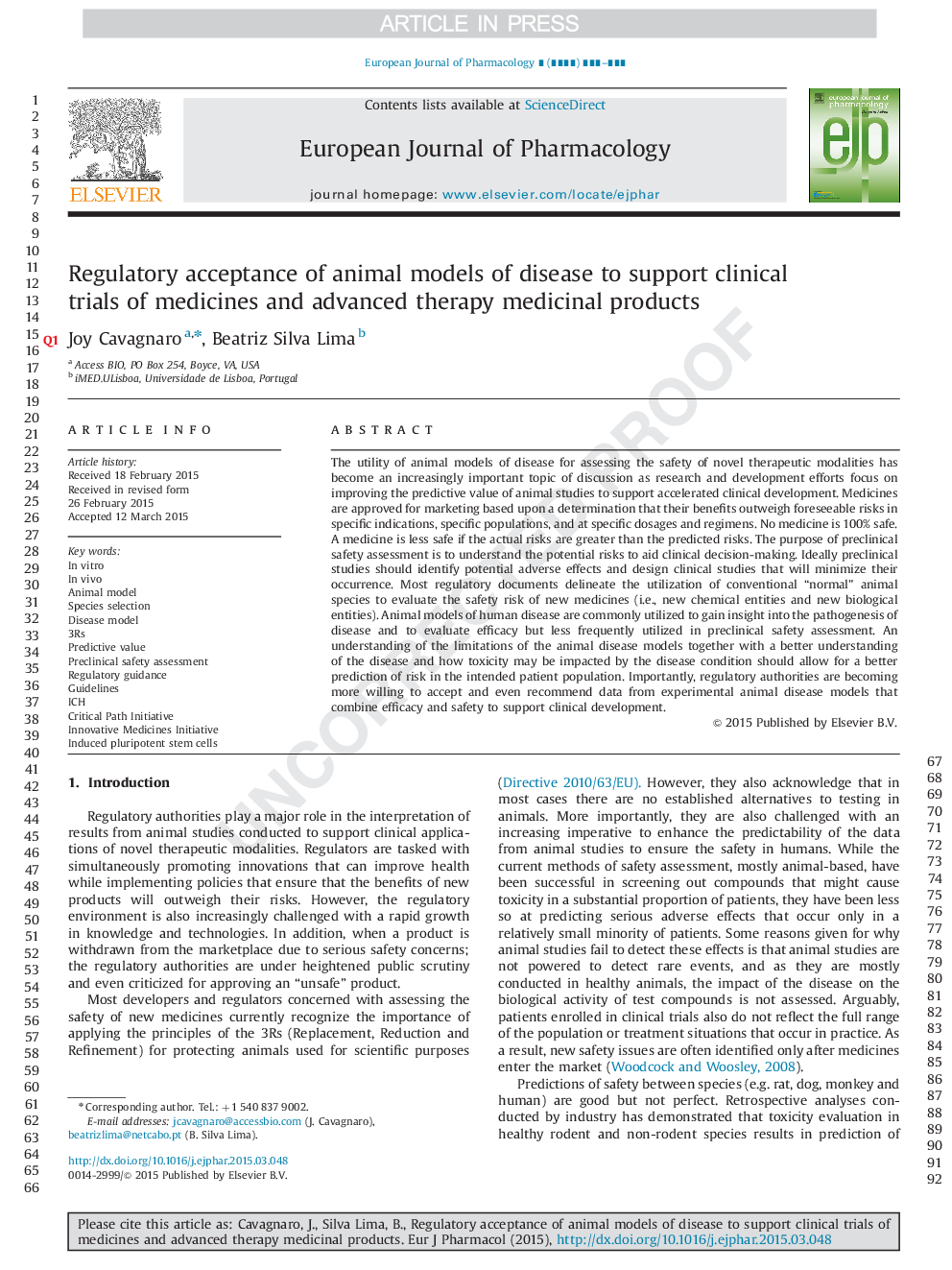| Article ID | Journal | Published Year | Pages | File Type |
|---|---|---|---|---|
| 5827269 | European Journal of Pharmacology | 2015 | 12 Pages |
Abstract
The utility of animal models of disease for assessing the safety of novel therapeutic modalities has become an increasingly important topic of discussion as research and development efforts focus on improving the predictive value of animal studies to support accelerated clinical development. Medicines are approved for marketing based upon a determination that their benefits outweigh foreseeable risks in specific indications, specific populations, and at specific dosages and regimens. No medicine is 100% safe. A medicine is less safe if the actual risks are greater than the predicted risks. The purpose of preclinical safety assessment is to understand the potential risks to aid clinical decision-making. Ideally preclinical studies should identify potential adverse effects and design clinical studies that will minimize their occurrence. Most regulatory documents delineate the utilization of conventional “normal” animal species to evaluate the safety risk of new medicines (i.e., new chemical entities and new biological entities). Animal models of human disease are commonly utilized to gain insight into the pathogenesis of disease and to evaluate efficacy but less frequently utilized in preclinical safety assessment. An understanding of the limitations of the animal disease models together with a better understanding of the disease and how toxicity may be impacted by the disease condition should allow for a better prediction of risk in the intended patient population. Importantly, regulatory authorities are becoming more willing to accept and even recommend data from experimental animal disease models that combine efficacy and safety to support clinical development.
Keywords
Related Topics
Life Sciences
Neuroscience
Cellular and Molecular Neuroscience
Authors
Joy Cavagnaro, Beatriz Silva Lima,
